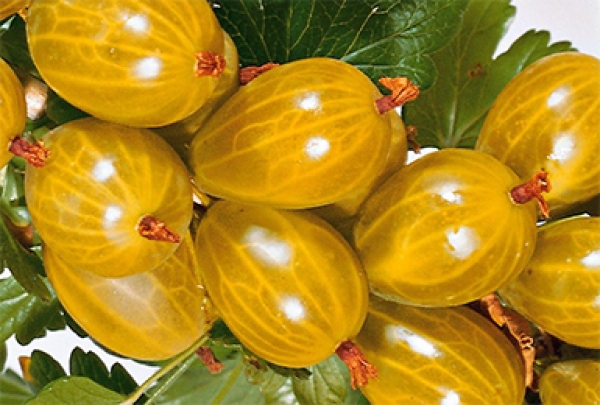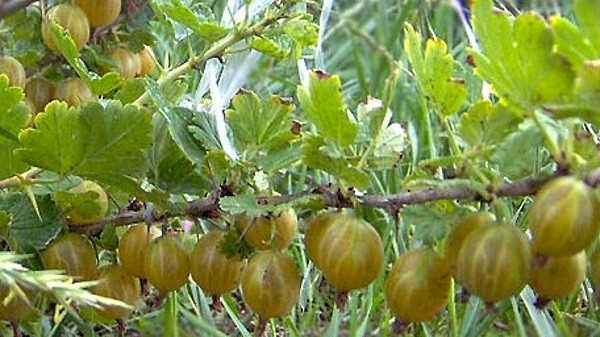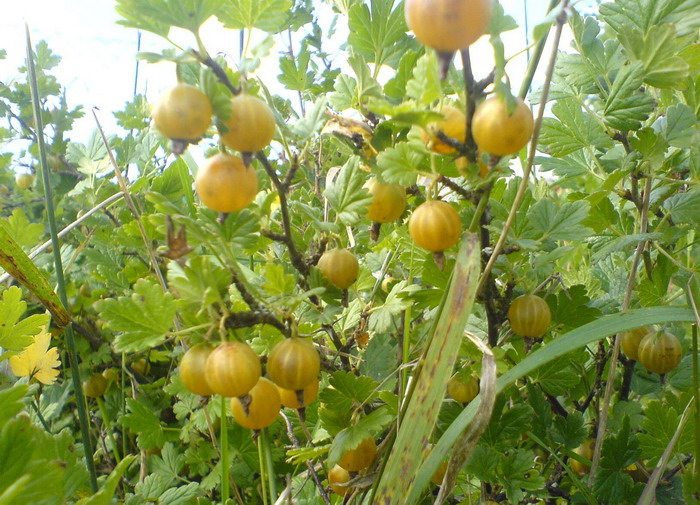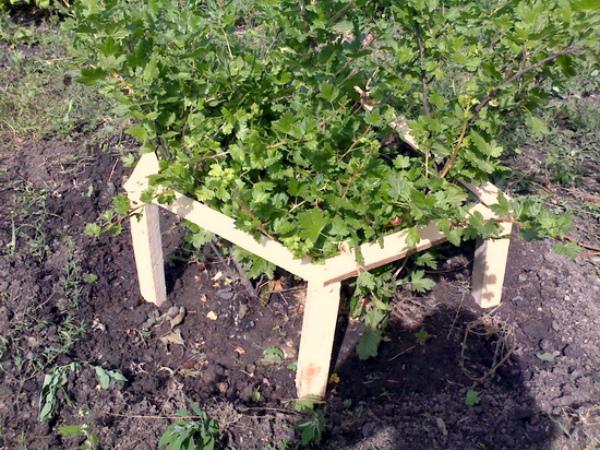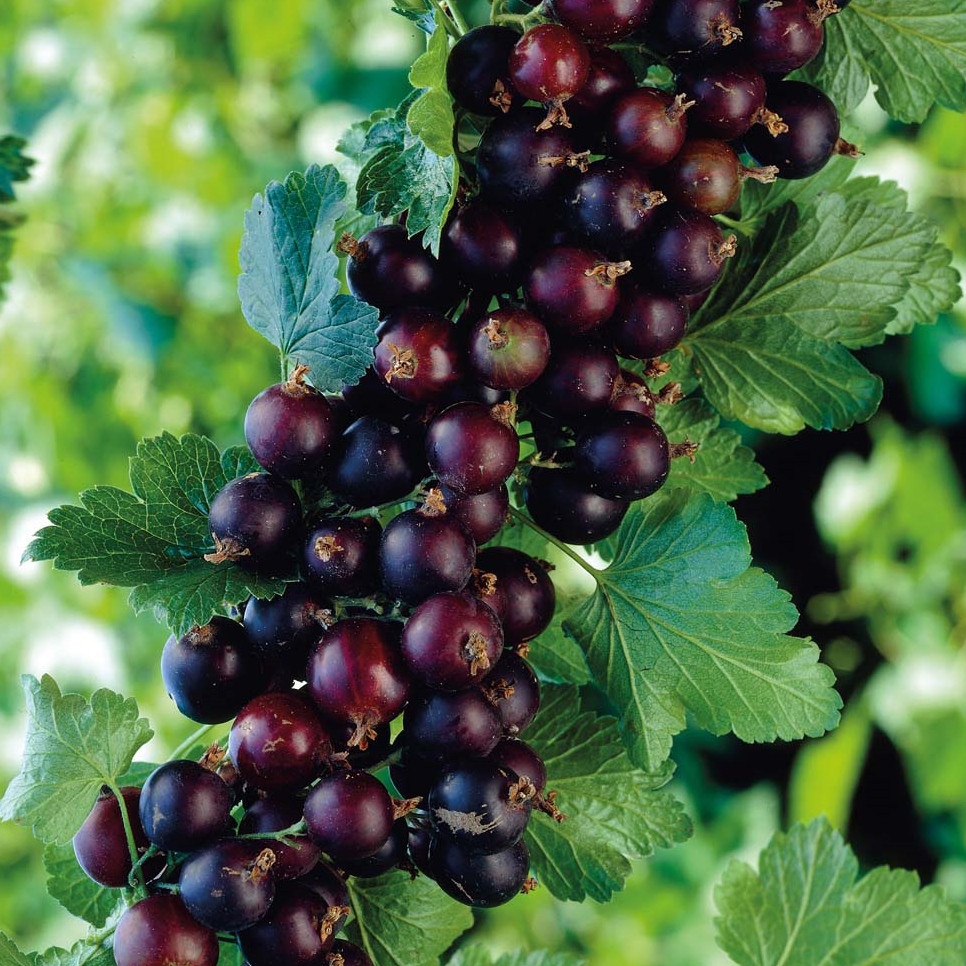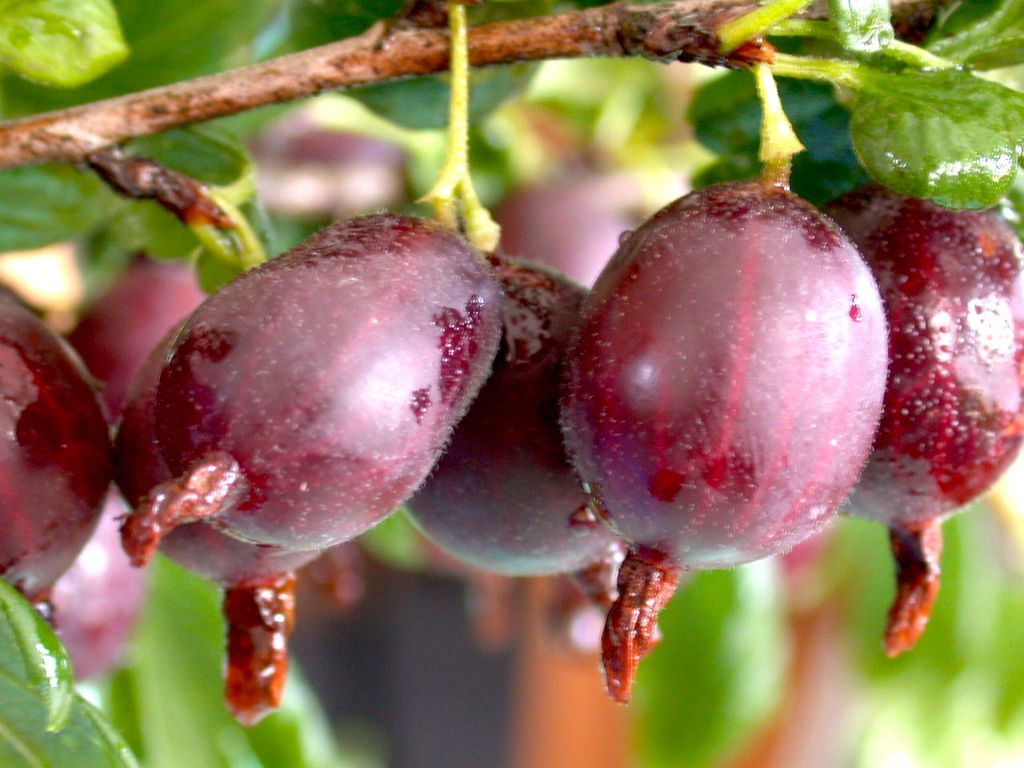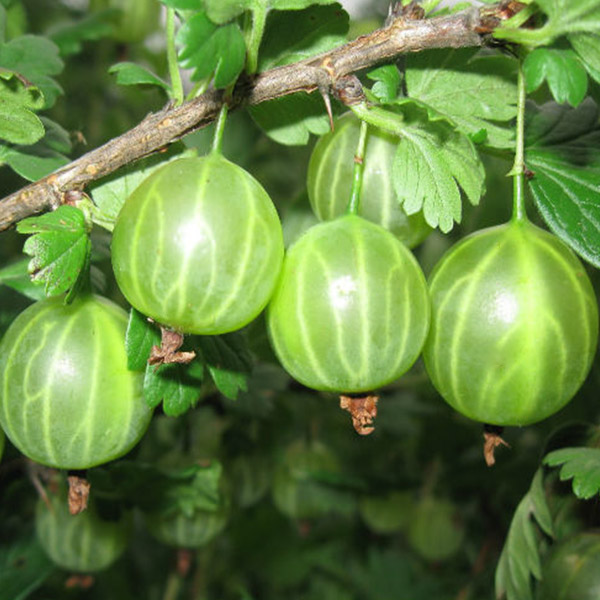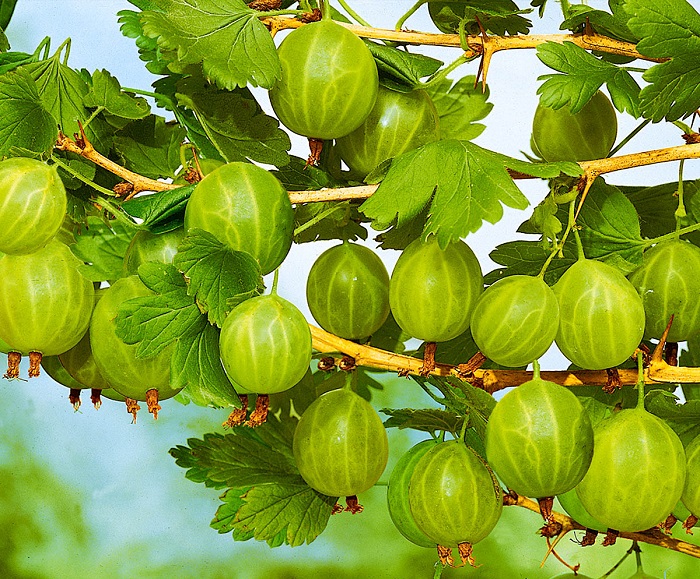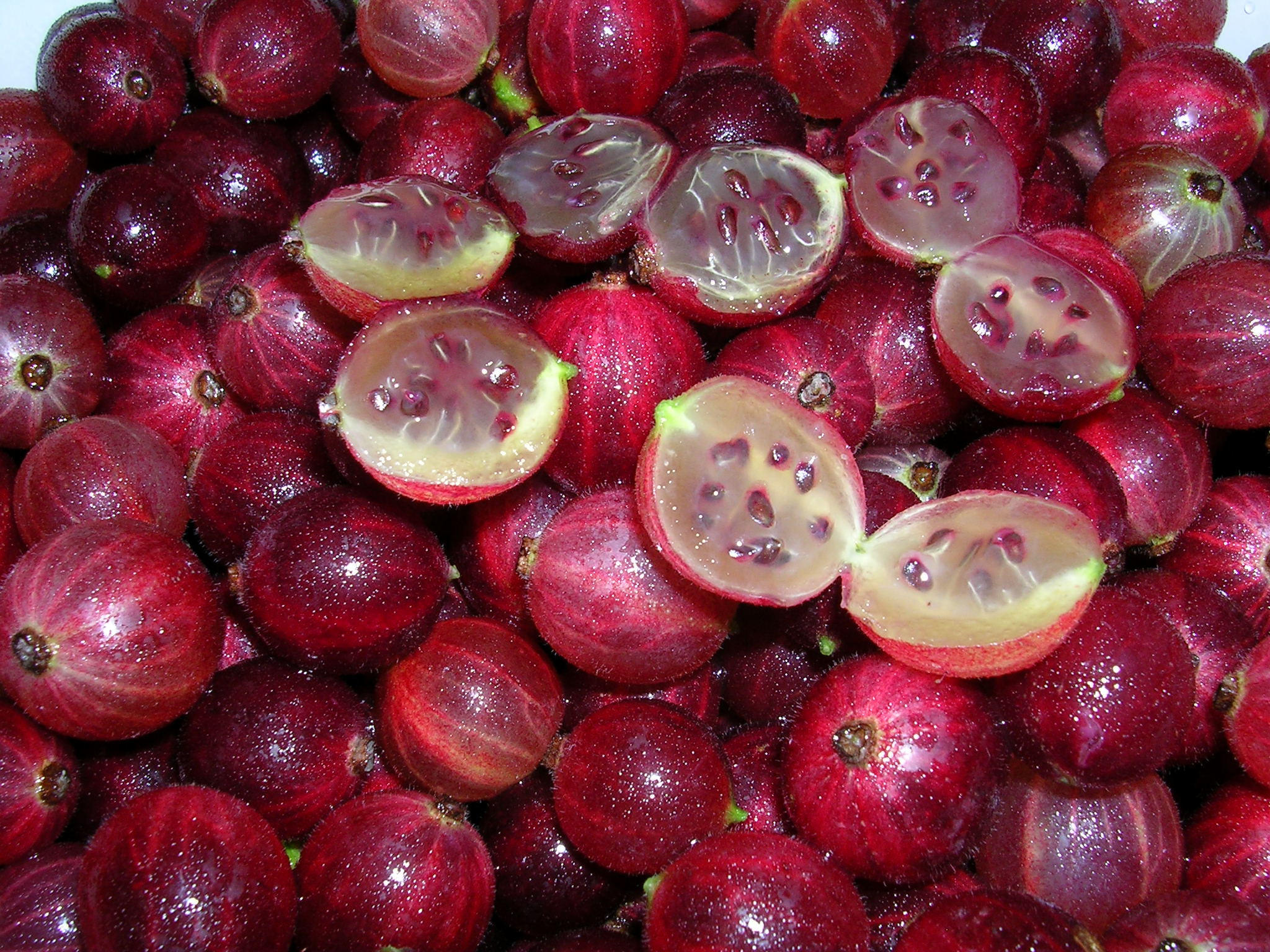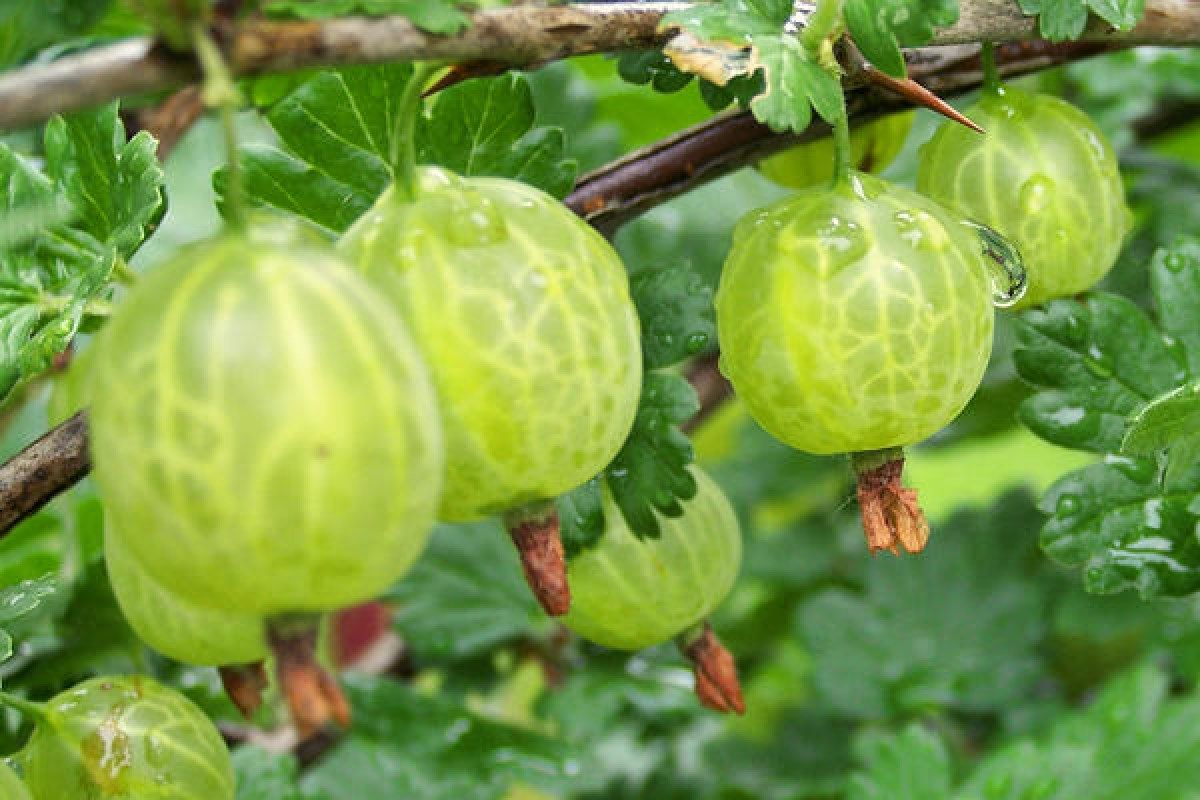Content:
There are many gooseberry varieties, among them the Yantarny gooseberry variety stands out. It is a self-pollinated species brought from England. It is undemanding to care and growing conditions. The unpretentiousness allowed the variety to grow in all regions of Russia, and its high yield and tasty fruits quickly gain popularity among gardeners. Once in our country, a variety of gooseberry culture quickly spread throughout the gardens and plots.
Amber stands out among other varieties with large, up to 5 g, bright golden sweet berries with a slight hint of acid. A delicate honey aroma comes from the berries.
The variety is used for making jam, fresh consumption and for preparations for the winter. It can be easily combined with other berries: currants, citrus fruits and raspberries.
On a note. The beneficial properties of gooseberries are known to everyone. With its regular use in food, the risk of vascular disease decreases, cholesterol decreases.
The variety began its history in the middle of the 20th century. It was bred with free pollination of the European group of yellow varieties. The bush is high and spreading, there are few thorns on it.
Gooseberry Amber: variety description and characteristics
The plant does not require a pollinator, but the proximity to other gooseberry shrubs increases the yield. The berry begins to bear fruit in the second year after planting and continues for 30-40 years. Depending on the area of growth, the berries ripen during July-August. Fruit formation is extended and lasts up to 30 days. They begin to collect them when an intense shade of fruit is reached, when the berries are easily separated from the branches. Ripe berries have a golden amber color with white stripes.
Frost resistance
Gooseberry Amber has good frost resistance. It easily tolerates both drought and severe frosts.
Yield
Belonging to the European group of gooseberries, the variety has a high yield and is capable of producing 10 kg per season from one bush. But for this it is necessary to provide the plant with optimal moisture. The site should not be waterlogged, but drought should not be allowed either.
Illumination is of great importance - in the shade, the yield of gooseberries decreases. Many plant bushes along the fence. This protects the plant from the wind and allows for the most complete illumination throughout the day.
Flowering and fruiting
This variety ripens earlier than others. It blooms in May, and by mid-July, the berries begin to sing together. Fruits are large, up to 5 g, sweet taste with a slight hint of acid, with a honey aroma. The berries hang on the bushes for a long time without crumbling or spoiling, making it easier to pick them. Thanks to the thick skin of the fruit, they are not injured during long-term transportation.
Attention! Be careful when picking berries - sharp thorns can easily hurt.
Plant parameters
The amber gooseberry variety is very tall. Its bushes reach one and a half meters. Spreading shrub with sparse but sharp thorns. The bush needs a garter.
Agricultural technology of cultivation
Amber gooseberry is unpretentious, but its cultivation requires compliance with certain conditions.
Choosing a landing site
The site should be well lit by the sun.Bushes are planted along the fence or between other fruit trees, but the distance to them should not be less than two meters. A distance of one and a half meters is left to any buildings. Having chosen a place, it is cleared of weeds, debris and stones. The soil is dug up and fertilized.
Soil type
The shrub grows well on any soil in all regions of our country, but organic fertilizers are needed for good fruiting. How much to add depends on the soil. Gooseberries are indifferent to the acidity of the soil, but the close occurrence of groundwater harms it.
Selection of seedlings
When buying seedlings, you should consult with experienced gardeners or study information in directories and on the Internet. A young seedling should have 2-3 branches from 30 to 50 cm in length. A healthy plant has no cracks in the bark, and its roots reach 15 cm without visible dry areas.
It is better to make a purchase from friends and trusted sellers or in a special gardening nursery. The seller is not shy about asking questions about the plant. His answers show professionalism and honesty. It is better to abandon the seedlings that cause distrust in advance. In the best case, an off-grade plant will appear in the garden, and in the worst case, you can infect and infect all crops. Choose a one year old seedling or a two year old. The purchased plant is packed in a damp cloth and polyethylene so that the root system does not dry out. It can only be transported vertically.
Planting and leaving
Gooseberries are planted in the spring before bud or late fall. Autumn colds have a beneficial effect on the root system. But when planting in spring, the seedling gains strength over the summer and leaves stronger in winter. Gooseberry seedlings are easy to transplant. They dig holes 50-70 cm wide and 20 cm deep. Introduce 2 buckets of humus and a glass of wood ash into each planting hole. They make a talker from clay and manure and dip the roots of young plants in it. Leaves, dry and damaged roots are removed. Landing is carried out vertically, with neatly straightened roots. Add soil and water gradually. Up to 5 cm of the root collar is left above the surface. The pit is covered with soil and watered well. It is impossible to tamp the landing site - this will reduce air exchange. In planted plants, shoots are cut to the sixth bud. Several shrubs are planted, leaving a distance of 1.5 meters between them.
In the first year, the seedling must be spilled with boiling water to destroy possible infections and pest nests.
Young gooseberries are regularly watered, loosened up the soil and removed weeds. It is impossible to water with sprinkling in order to avoid the occurrence of diseases. Water is poured only at the root. Leaves should stay dry. Sprinkle with warm water. Water that is too cold can cause infection.
Every year humus or humus and ash are added under the bush.
In the fall, after harvesting, the trunk circle is mulched with sawdust or peat. In the spring, the mulch is pushed aside and the soil is loosened under it.
After planting in the first year, amber gooseberries need formative pruning. It is essential for proper development. In the second and third years, perennial branches are cut in half. In the fourth year of life, the bush is thinned out, removing weak and dried branches.
Care consists in loosening the soil, removing weeds, top dressing and regular watering - 1-2 times a week. There is no need to water the plant in rainy weather. This culture does not like waterlogging of the soil.
Potassium, saltpeter, superphosphate and humus are used for feeding. They are used after flowering, during the growth of the fruit and after the end of fruiting.
It is important for the plant to get air to the roots. To do this, they constantly loosen the soil around the bush. This is especially important on heavy clay soil.
A powerful bush needs support. Stakes are driven in around it, tied with rope or wooden supports are made. Bush branches are raised and tied to the fence. The gooseberries planted near the fence are tied to a trellis.
Preparing for winter
Dry branches are removed from a fertile shrub, fallen leaves are removed.In October, the branches are easily tied with a rope so as not to injure them, and they are bent to the ground. Having fixed the bush, cover it with mulching material. When the first snow falls, it is thrown to the bush. In regions with severe winters, young gooseberries are also covered with cellophane.
Pests and diseases
Amber gooseberry has a well-developed immune system, therefore, diseases are not terrible for it. It is rarely attacked by pests. Proper planting and caring for the plant reduces the risk of disease to almost zero. But there are exceptions to every rule, so the health of culture cannot be guaranteed. The most common diseases of amber gooseberry are powdery mildew, rust and anthracnose. Gooseberries are resistant to fruit rot and other fungal diseases.
For amber gooseberries, aphids, spider mites and moths can pose a threat. But damage by pests happens only when agricultural technology is not followed. When harmful insects appear, the soil under the bushes is dug up, weeds and debris are removed.
Variety advantages and disadvantages
The bright gooseberry is loved by many gardeners. They appreciate its taste, resistance to viruses, infections and pests, unpretentious care. Berries are rich in vitamins, and they are useful fresh. Compotes, jams and preserves are cooked from gooseberry fruits, they are frozen for the winter. Variety advantages:
- Early ripening and long-term fruiting;
- High productivity;
- Pickyness to the ground;
- Frost resistance;
- Large fruits;
- Sweet taste and pleasant aroma.
There are practically no disadvantages of this gooseberry variety. These include only 2 factors:
- A small presence of large sharp thorns that make it difficult to harvest and trim the plant;
- With an excess of moisture, the berries may crack.
Any gardener understands that such shortcomings of gooseberries are inherent in many varieties, but in the Amber species they are more than overlapped by a rich harvest of tasty and healthy berries, sparkling in the sun like amber.
